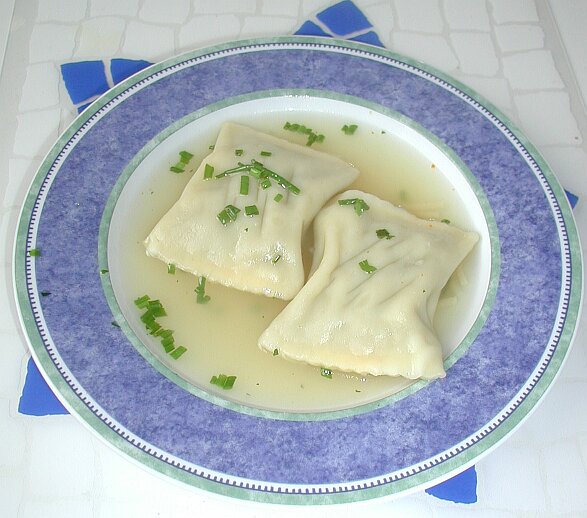Facts About Maultasche
Maultaschen is a cherished traditional German dish originating from the Swabia region. Imagine ravioli, but larger—each Maultasche is typically 8-12 centimeters and can be either square or rectangular. The pasta dough is filled with a delectable mixture of minced meat, smoked meat, spinach, bread crumbs, onions, herbs, and spices.
In 2009, the European Union designated Maultaschen as a regional specialty, meaning only those produced in Swabia can officially be called Maultaschen. This dish holds deep cultural significance, especially during Lent. In Swabia, it is customary to eat Maultaschen on Maundy Thursday and Good Friday, times when meat consumption is traditionally restricted. The filling, cleverly concealed inside the pasta dough, has led to the humorous nickname "small God-cheaters."
The origin of the name Maultaschen is somewhat enigmatic. It might derive from the word for "feedbag" "slap in the face" or even "Maulbronn-Taschen." Interestingly, a cookbook from 1794 includes recipes for sweet Maultaschen as well.
You can enjoy Maultaschen in two main ways: simmered in broth or served with butter and onions. Some variations of the filling include bacon for an added flavor kick. In Southwest Wisconsin, where many German descendants reside, there’s even a dessert version made with flour, eggs, apples, and cinnamon, inspired by the savory original.
Whether you prefer them savory or sweet, Maultaschen is a dish that brings a taste of Swabian tradition to your table.

 France
France